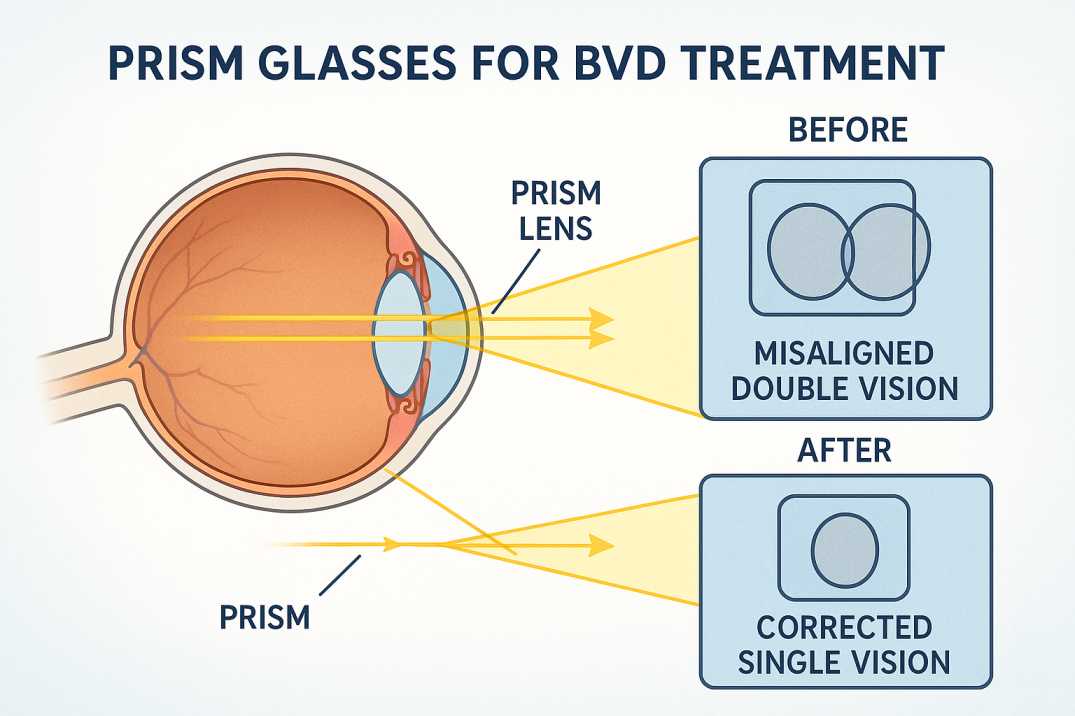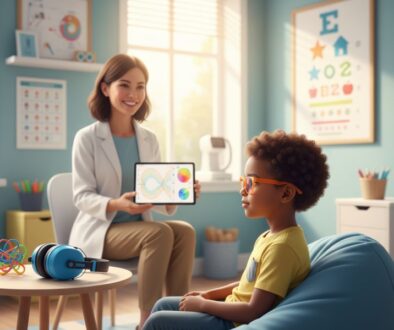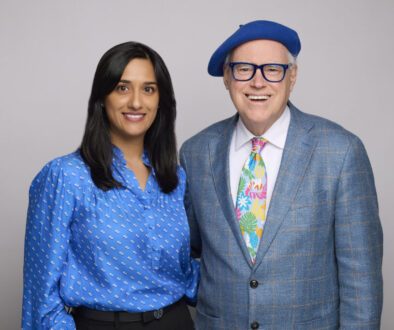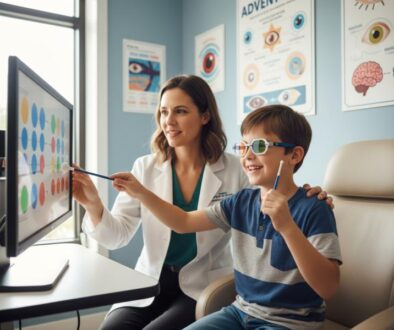Vision Therapy or Prism Glasses for BVD? Expert Guide
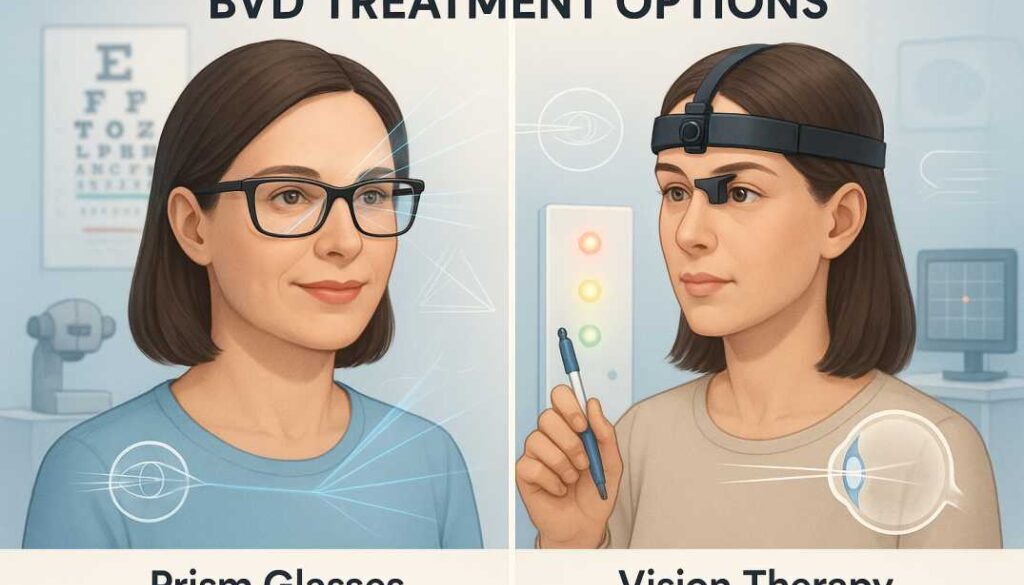
Are you experiencing unexplained headaches, dizziness, or reading difficulties that traditional treatments haven’t resolved? The answer might lie in your eyes. Binocular Vision Dysfunction (BVD) affects millions of people worldwide, yet many suffer for years without proper diagnosis or treatment. This comprehensive guide from Cook Vision Therapy Center compares the two primary treatment approaches—vision therapy and prism glasses—to help you make an informed decision about your care.
Understanding Binocular Vision Dysfunction
Binocular Vision Dysfunction occurs when your eyes are slightly misaligned, making it difficult for them to work together as a coordinated team. This misalignment causes the brain to struggle with combining the visual input from each eye into a single, clear image. Unlike obvious eye turns or crossed eyes, BVD involves subtle misalignments that often go undetected in standard eye examinations. Effective BVD treatment is essential for restoring visual comfort and function.
Recognizing BVD Symptoms
BVD presents with a wide range of symptoms that significantly impact daily functioning:
Visual Symptoms:
- Double vision or blurred vision
- Eye strain and fatigue
- Difficulty focusing
Physical Symptoms:
- Persistent headaches, particularly after visual tasks
- Dizziness and balance issues
- Neck pain and muscle tension
- Motion sickness or nausea
Functional Difficulties:
- Losing place while reading
- Words appearing to move on the page
- Difficulty concentrating
- Anxiety in crowded or visually complex environments
- Feeling unsteady on stairs or uneven surfaces
BVD can significantly impact the lives of both children and adults. Due to this wide range of symptoms, the condition is often misdiagnosed as dyslexia, ADD/ADHD, or other learning disorders. The right BVD treatment approach can dramatically improve quality of life and academic or professional performance.
Treatment Option 1: Vision Therapy for BVD
Understanding Vision Therapy
Vision therapy represents a highly effective BVD treatment for Binocular Vision Dysfunction. This specialized form of optometric care involves a series of progressive exercises and activities designed to retrain the eyes and brain to work together more efficiently. Think of it as physical therapy for your visual system—a systematic approach to improving the underlying coordination between your eyes and brain.
The Vision Therapy Process
Vision therapy works by targeting the root causes of binocular vision dysfunction, systematically retraining and strengthening the coordination between your eyes and brain. The comprehensive process includes:
1. Comprehensive Functional Evaluation: Your optometrist conducts an extensive assessment to identify specific visual processing issues contributing to your BVD, going far beyond standard vision screenings.
2. Individualized Treatment Design: Based on evaluation findings, a personalized vision therapy program is developed, typically spanning 4-8 months with specific goals and milestones.
3. Supervised In-Office Sessions: You’ll work one-on-one with a trained vision therapist on targeted exercises designed to improve eye coordination, tracking, focusing, and brain-eye communication.
4. Structured Home Practice: Daily reinforcement exercises consolidate skills learned during therapy sessions, ensuring consistent progress between appointments.
5. Ongoing Progress Assessment: Regular evaluations track improvement and allow for treatment plan adjustments to optimize outcomes.
Specialized Vision Therapy Techniques
At Cook Vision Therapy Center, evidence-based vision therapy techniques include:
- Convergence Training: Pencil push-ups and computerized exercises to improve the eyes’ ability to work together at near distances
- Therapeutic Prism Exercises: Using graduated prisms to challenge and strengthen the visual system’s adaptability
- Ocular Motor Training: Computer-based programs targeting specific visual skills like tracking and saccadic movements
- Visual-Vestibular Integration: Balance and coordination activities that integrate visual processing with the body’s spatial awareness systems
- Perceptual Learning: Targeted exercises that improve how the brain processes and interprets visual information
Vision Therapy Benefits
Addressing Root Causes: Vision therapy provides a long-term solution for vision problems by addressing underlying causes rather than merely managing symptoms. Dr. David Cook’s 40+ years of experience at Cook Vision Therapy Center have demonstrated that vision therapy can provide lasting improvements for many patients.
Comprehensive Improvement: Research shows that binocular vision training significantly helps children eliminate or reduce headaches, dizziness, anxiety in open spaces, and improves concentration and academic performance.
Neuroplasticity Advantages: Patients develop stronger eye-brain connections through neuroplastic changes that persist even after treatment completion, providing lasting benefits.
Functional Integration: Unlike passive treatments, vision therapy improves the overall efficiency of the visual system, enhancing performance in reading, sports, and daily activities.
Vision Therapy Considerations
Time Investment: Treatment typically requires 4-8 months of consistent therapy sessions and daily home practice exercises, demanding significant commitment from patients and families.
Active Participation: Success depends on patient engagement and consistent practice. The therapeutic process requires effort and dedication to achieve optimal outcomes.
Scope Limitations: While highly effective for many forms of BVD, vision therapy for binocular vision dysfunction primarily addresses horizontal misalignments through eye exercises and may be less effective for certain complex vertical or oblique misalignments.
Treatment Option 2: Prism Glasses for BVD
Understanding Prism Correction
Prism lenses represent a sophisticated optical solution that bends light before it enters the eye, redirecting it to the correct retinal area in each eye. These specialized lenses help align the images seen by each eye, effectively reducing strain on your visual system. Prism glasses represent a proven BVD treatment option for immediate symptom relief, offering a non-invasive approach to visual correction.
The Science Behind Prism Correction
Prism lenses work by manipulating light refraction to compensate for eye misalignment. When light passes through a prism, it bends toward the base of the prism, effectively shifting the image position. For individuals with BVD, this optical shift allows the brain to more easily fuse the images from both eyes into a single, clear picture, eliminating the strain and symptoms associated with misalignment.
The prescription is precisely calculated to provide just enough optical correction to restore comfortable binocular vision without overcorrection.
Types of Prism Correction
Microprism Lenses: These precisely engineered eyeglasses incorporate small amounts of prism directly into the lens material. Microprism lenses offer the unique ability to bend light as it enters the eye while maintaining excellent optical clarity and cosmetic appearance for individuals with BVD.
Fresnel Prisms: Thin, press-on vinyl prisms that adhere to existing lenses, typically used for temporary corrections, testing purposes, or when large amounts of prism are needed. While more visible than ground-in prisms, they offer flexibility for adjustments.
Ground-in Prisms: Permanently incorporated into prescription lenses during manufacturing, these prisms provide optimal cosmetic appearance and optical quality for long-term wear, making them the preferred choice for most patients.
Prism Glasses Benefits
Immediate Symptom Relief: Clinical data show that the average patient will notice a 50% reduction of symptoms by the end of their first visit when properly fitted with prism glasses, providing rapid improvement in visual comfort.
Treatment Convenience: Once prescribed and properly fitted, prism glasses require no daily exercises, ongoing therapy sessions, or active patient participation beyond consistent wear.
Comprehensive Scope: Advanced NeuroVisual Medicine techniques offer faster relief with precision microprism glasses tailored for horizontal, vertical, and oblique misalignments, often achieving significant symptom reduction within 6–8 weeks.
Documented Success: Clinical research demonstrates that when treated with microprism lenses for their BVD, the average patient experiences an 80% reduction of symptoms by the end of treatment.
Patient Success Stories
Real-world clinical outcomes demonstrate the effectiveness of prism correction:
Case Study 1: David, a professional driver, suffered from debilitating dizziness while driving, which caused anxiety and nausea. After seeing multiple specialists, including ENT doctors, physical therapists, and chiropractors, without improvement, he was diagnosed with eye misalignment and prescribed prism glasses, resulting in a 90% improvement of his symptoms and restored confidence behind the wheel.
Case Study 2: Gail, a concussion survivor, experienced persistent dizziness and double vision that forced her to drive and watch television with one eye covered. After consulting four different eye doctors, she received a comprehensive evaluation and was prescribed prism glasses, achieving 100% improvement in her symptoms and complete restoration of binocular function.
Prism Glasses Considerations
Ongoing Dependency: Prism glasses must be worn consistently throughout each day to maintain symptom relief. They function as a management tool rather than a cure, requiring continued use to prevent symptoms from returning.
Investment Considerations: While initially less expensive than vision therapy, prism glasses represent an ongoing investment as prescriptions may require periodic adjustments as the visual system changes over time.
Adaptation Process: Most patients adapt to prism glasses within several days, though some may experience a brief adjustment period. The initial prism prescription often requires fine-tuning over subsequent visits as the visual system relaxes and adapts to the correction.
Comparative Analysis: Vision Therapy vs. Prism Glasses
Treatment Timeline and Outcomes
| Treatment Aspect | Vision Therapy | Prism Glasses |
|---|---|---|
| Initial Relief | 2-4 weeks | Same day |
| Optimal Results | 4-8 months | 6-8 weeks |
| Long-term Benefit | Potential permanent improvement | Ongoing symptom management |
| Patient Involvement | Active participation required | Passive correction |
Investment Analysis
Vision Therapy: Comprehensive treatment programs typically range from $1,000 to $9,000, with individual sessions costing $150-$200. Programs generally involve 12-24 sessions over 4-8 months, representing a significant upfront investment with potential for long-term resolution.
Prism Glasses: Initial costs range from $600 to $1,500+ for ground-in prism lenses, with Fresnel prisms costing $250-$500. Most vision insurance plans cover prism glasses as they are medically prescribed, though periodic adjustments may incur additional costs.
Clinical Effectiveness by Condition Type
Horizontal Misalignments: Both treatment modalities demonstrate excellent results for horizontal eye alignment issues, with vision therapy offering the potential for permanent correction through neuroplastic adaptation.
Vertical and Oblique Misalignments: NeuroVisual Medicine with precision microprism glasses often provides faster and more comprehensive relief for complex, multi-directional misalignments, while traditional vision therapy may be less effective for these challenging cases.
Patient Demographics: Children with BVD often experience academic difficulties, frequent headaches, and behavioral challenges. Cook Vision Therapy Center specializes in helping families understand how vision impacts learning and development, with binocular vision training particularly effective for pediatric populations.
Current Research and Evidence
Clinical Research Supporting Prism Treatment
Contemporary clinical evidence demonstrates the effectiveness of prism correction for BVD management. NeuroVisual Medicine specialists have documented treatment outcomes for over 50,000 patients globally, with consistent success rates across diverse populations. When treated with microprism lenses, the average patient experiences an 80% reduction of symptoms by the end of treatment, representing a significant clinical improvement in quality of life measures.
Vision Therapy Research Developments
Over the past two decades, the study and treatment of binocular vision has undergone a remarkable transformation. Current research emphasizes the importance of binocular vision in the overall quality of life and documents the negative impact suffered by individuals with binocular vision disorders.
Recent scientific advances include:
- Digital Integration: Enhanced therapy programs utilizing advanced computer-based training systems
- Virtual Reality Applications: Immersive training environments for enhanced visual rehabilitation
- Neuroplasticity Research: Improved understanding of brain adaptability supporting vision therapy efficacy
- Diagnostic Innovation: Advanced testing methods for more precise treatment targeting
Treatment Selection Guidelines
Optimal Candidates for Vision Therapy
Vision therapy may be the preferred approach if you:
- Seek a comprehensive solution addressing underlying visual processing issues
- Can commit to months of consistent treatment and home practice
- Have primarily horizontal misalignments or convergence-related disorders
- Prefer to avoid long-term dependence on corrective devices
- Are motivated to actively participate in your rehabilitation process
Cook Vision Therapy Center’s exclusive focus on vision therapy provides specialized expertise that general eye care practices typically cannot offer, ensuring optimal treatment outcomes.
Optimal Candidates for Prism Glasses
Prism glasses may be the better choice if you:
- Require immediate symptom relief for urgent functional needs
- Have complex vertical or oblique misalignments
- Cannot commit to lengthy therapy programs due to time or logistical constraints
- Have previously attempted vision therapy without satisfactory results
- Prefer a passive treatment approach with minimal ongoing effort
Professional Treatment Planning
Comprehensive BVD Evaluation
Successful BVD treatment begins with accurate diagnosis through specialized assessment. At Cook Vision Therapy Center, we conduct comprehensive evaluations that extend far beyond standard eye examinations. Our diagnostic process includes:
- Advanced binocular vision testing to detect subtle misalignments
- Functional vision assessment evaluating real-world visual demands
- Neurological screening to identify contributing factors
- Treatment recommendation based on individual patient needs and goals
- Ongoing monitoring throughout the treatment process
Individualized Treatment Planning
At Cook Vision Therapy Center, we collaborate with each patient to develop personalized treatment strategies that consider:
- Symptom severity and impact on daily functioning
- Lifestyle demands and constraints affecting treatment choice
- Patient preferences and goals for visual improvement
- Previous treatment history and outcomes
- Insurance coverage and financial considerations
Integrated Treatment Approaches
Some patients benefit from combination therapy strategies:
- Sequential treatment: Beginning with prism glasses for immediate relief, then transitioning to vision therapy for long-term correction
- Complementary approaches: Using therapeutic prisms during vision therapy sessions to enhance treatment effectiveness
- Maintenance programs: Combining periodic vision therapy tune-ups with prism correction for optimal long-term outcomes
Taking Action: Your Path Forward
Professional BVD Assessment
The foundation of effective BVD treatment lies in accurate, comprehensive diagnosis. At Cook Vision Therapy Center, our specialized evaluation process goes well beyond standard vision screenings to identify the specific visual processing issues affecting your daily life. Our team provides:
- Comprehensive functional vision testing using advanced diagnostic techniques
- Precise misalignment measurement to determine optimal treatment approaches
- Evidence-based treatment recommendations tailored to your specific needs
- Ongoing progress monitoring to ensure optimal outcomes throughout treatment
Collaborative Treatment Planning
At Cook Vision Therapy Center, we believe in a collaborative approach to treatment planning. Our process involves:
- Detailed symptom assessment to understand your specific challenges
- Lifestyle analysis to determine how treatment fits into your daily routine
- Goal setting that aligns with your personal and professional objectives
- Treatment timeline development with realistic expectations and milestones
- Insurance coordination to maximize your benefits and minimize out-of-pocket costs
Resources and Citations
The following peer-reviewed sources and clinical research studies were referenced in developing this comprehensive guide:
1. Clinical Research on Binocular Vision Dysfunction
Source: “Advances in Research in Binocular Vision” – Journal of Optometry
Key Findings: Over the last two decades, the study and treatment of binocular vision has undergone a remarkable transformation, with recent studies describing the importance of binocular vision and the negative impact on quality of life suffered by individuals with binocular vision disorders.
Reference URL: https://www.ncbi.nlm.nih.gov/pmc/articles/PMC8258125/
2. NeuroVisual Medicine Treatment Outcomes
Source: “Vision Therapy for BVD vs. NeuroVisual Medicine” – Vision Specialists Institute
Key Findings: NeuroVisual Medicine offers faster relief with precision microprism glasses tailored for horizontal, vertical, and oblique misalignments, with documented treatment of over 50,000 patients achieving an average 80% symptom reduction.
Reference URL: https://vision-specialists.com/vision-health/treatments/vision-therapy-vs-neurovisual-medicine/
3. Prism Glasses Effectiveness and Patient Outcomes
Source: “Binocular Vision Dysfunction Patient Testimonials” – Eye Care North Clinical Studies
Key Findings: Clinical documentation of patient outcomes showing 90-100% symptom improvement in properly diagnosed BVD cases treated with microprism lenses, with immediate relief reported in first-day assessments.
Reference URL: https://www.eyecarenorth.com/bvd-video-testimonials.html
These resources represent current best practices in BVD diagnosis and treatment, providing evidence-based support for the treatment recommendations outlined in this guide.
Conclusion: Restoring Visual Comfort and Function
When BVD is accurately diagnosed, effective treatment—whether through specialized prism lenses, comprehensive vision therapy, or combination approaches—can successfully manage the condition and eliminate debilitating symptoms. Both vision therapy and prism glasses represent evidence-based BVD treatment solutions, each offering distinct advantages for different patient populations and circumstances.
The key insight: Vision therapy provides comprehensive rehabilitation through systematic retraining of your visual system, while prism glasses offer immediate symptom management through precise optical correction. The optimal choice depends on your individual circumstances, treatment goals, symptom severity, and commitment to different therapeutic approaches.
Don’t allow BVD symptoms to continue compromising your quality of life, academic performance, or professional success. With proper diagnosis and appropriate BVD treatment at Cook Vision Therapy Center, you can experience significant improvement and return to comfortable, efficient vision that supports your daily activities and long-term goals.
About Cook Vision Therapy Center
Cook Vision Therapy Center is Atlanta’s most experienced vision therapy practice, where Dr. David Cook’s four decades of expertise combine with Dr. Ekta Patel’s specialized training to provide life-changing, non-surgical treatments for children and adults struggling with binocular vision dysfunction, strabismus, amblyopia, and related visual processing disorders.
Medical Disclaimer: This article is for educational purposes only and should not replace professional medical advice. Always consult with a qualified eye care specialist for proper diagnosis and treatment recommendations. For specialized BVD evaluation and treatment, contact Cook Vision Therapy Center to schedule a comprehensive assessment.
FAQs
-
Both treatments are effective for different aspects: prism glasses provide immediate symptom relief, while vision therapy addresses underlying muscle coordination issues for long-term improvement.

